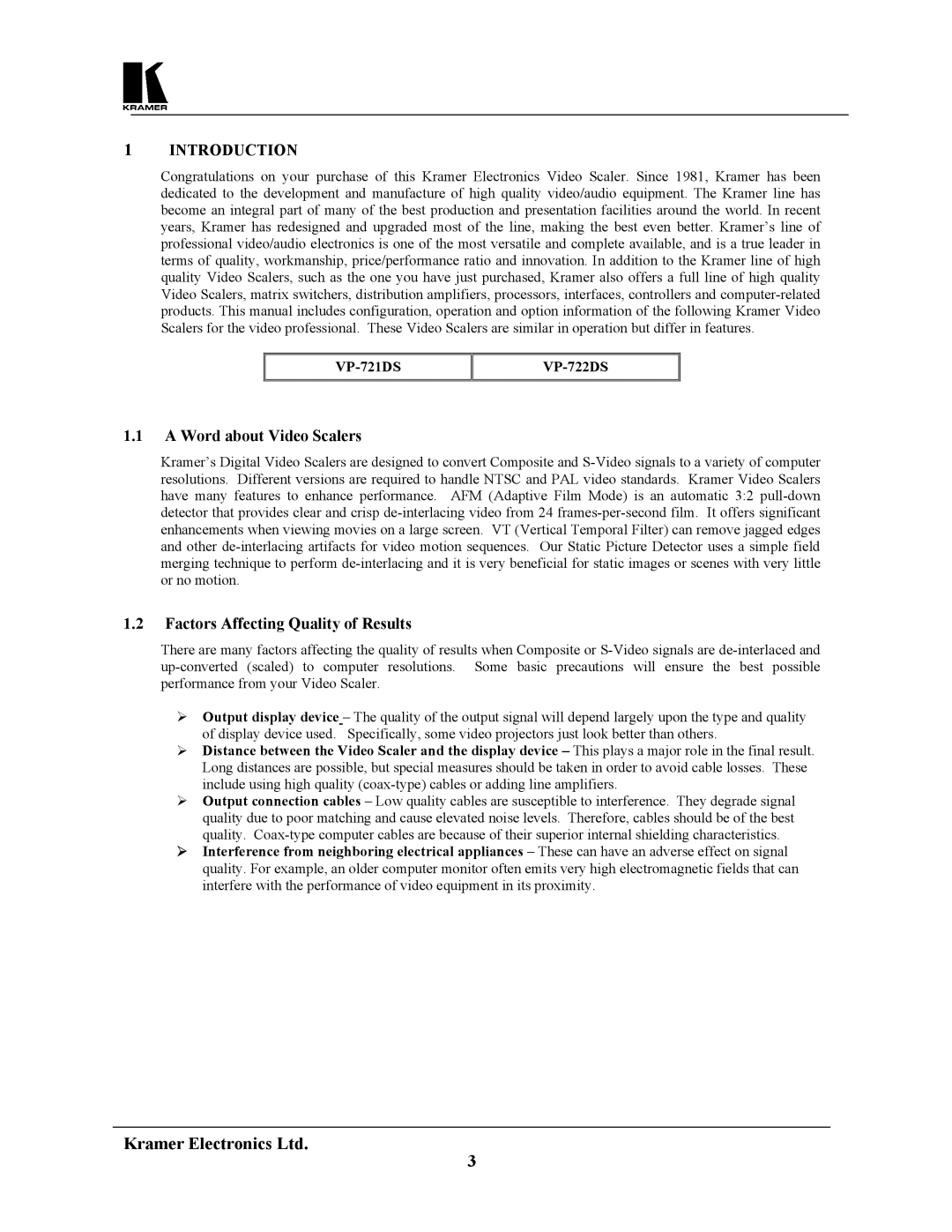
1INTRODUCTION
Congratulations on your purchase of this Kramer Electronics Video Scaler. Since 1981, Kramer has been dedicated to the development and manufacture of high quality video/audio equipment. The Kramer line has become an integral part of many of the best production and presentation facilities around the world. In recent years, Kramer has redesigned and upgraded most of the line, making the best even better. Kramer’s line of professional video/audio electronics is one of the most versatile and complete available, and is a true leader in terms of quality, workmanship, price/performance ratio and innovation. In addition to the Kramer line of high quality Video Scalers, such as the one you have just purchased, Kramer also offers a full line of high quality Video Scalers, matrix switchers, distribution amplifiers, processors, interfaces, controllers and
1.1A Word about Video Scalers
Kramer’s Digital Video Scalers are designed to convert Composite and
1.2Factors Affecting Quality of Results
There are many factors affecting the quality of results when Composite or
Output display device – The quality of the output signal will depend largely upon the type and quality of display device used. Specifically, some video projectors just look better than others.
Distance between the Video Scaler and the display device – This plays a major role in the final result. Long distances are possible, but special measures should be taken in order to avoid cable losses. These include using high quality
Output connection cables – Low quality cables are susceptible to interference. They degrade signal quality due to poor matching and cause elevated noise levels. Therefore, cables should be of the best quality.
Interference from neighboring electrical appliances – These can have an adverse effect on signal quality. For example, an older computer monitor often emits very high electromagnetic fields that can interfere with the performance of video equipment in its proximity.
Kramer Electronics Ltd.
3
